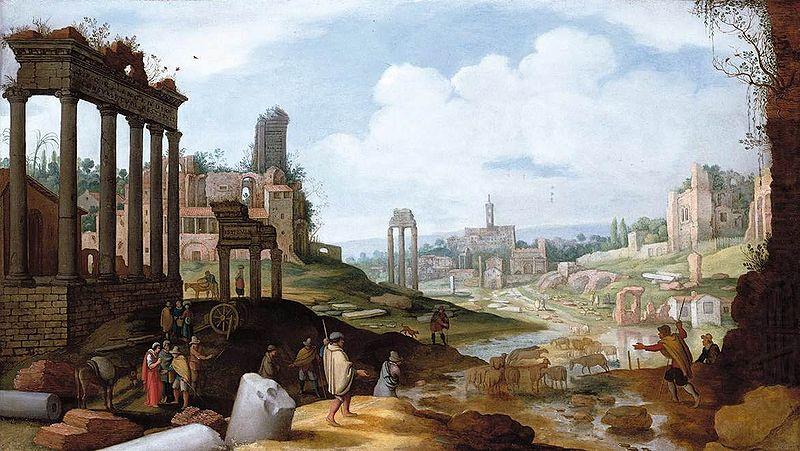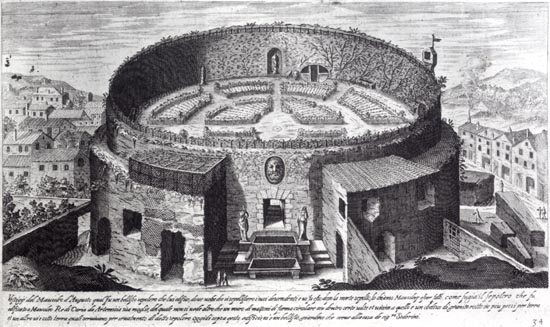In earlier times pagan temples were converted into Christian churches, mausoleums made to serve as fortresses, sarcophagi put to use as bathtubs: by such thrifty and practical expedients untold treasures from classical antiquity have been preserved from ruin and destruction…

—
All Willem van Nieulandt’s Paintings.
View of the Forum Romanum
first half of 17th century Medium Oil on copper—click image for source…
Above: Cow pasture 16th-century view of the Roman Forum by the Dutch painter Willem Van Nieulandt. For more than a millennium the Forum was plundered and neglected. In 1536 some of the debris was cleared away for a celebration, after which the cows and cowherds moved in. They seem to have done little harm, for all the monuments Nieulandt saw are still standing….

—Lemercier’s interest for Michelangelo’s work is proven in the engraving he made of the model of San Giovanni dei Fiorentini in 1607. His interest for Du Pérac is made clear by the fact that he was known to own a copy of I vestigi del’antichità di Roma and possibly another of the project for St. Peter’s in prints. One of the views in this work represents the Mausoleum of Augustus, taking advantage of a higher point of view to show its interior.
—click image for more…
Above: A 16th-century print showing how the grandiose mausoleum of Augustus was once pleasantly transformed into a garden…( to be continued)
ADDENDUM:
…Willem van Nieulandt:
(1584-1635) was a Dutch Golden Age painter and engraver from Antwerp. His father Adrien van Nieulandt the elder was born to a family of artists of Flemish origin from Antwerp. He probably moved with his family to Amsterdam in 1589 after the Siege of Antwerp, because they were Protestants. His three sons Willem van Nieulandt II (named for his uncle, also a painter), Adriaen van Nieulandt the younger, and Jacob van Nieulandt all became painters. According to Houbraken, Willem was a pupil of Roelant Savery in Amsterdam, and he left him to travel to Rome, where he became a student of Paulus Bril. He specialized in painting artistic ruins of monuments, arches, and temples, many of which he then engraved himself. He returned to Amsterdam (via Antwerp) in 1607, and became a respected poet there as well as Italianate painter….





 COMMENTS
COMMENTS